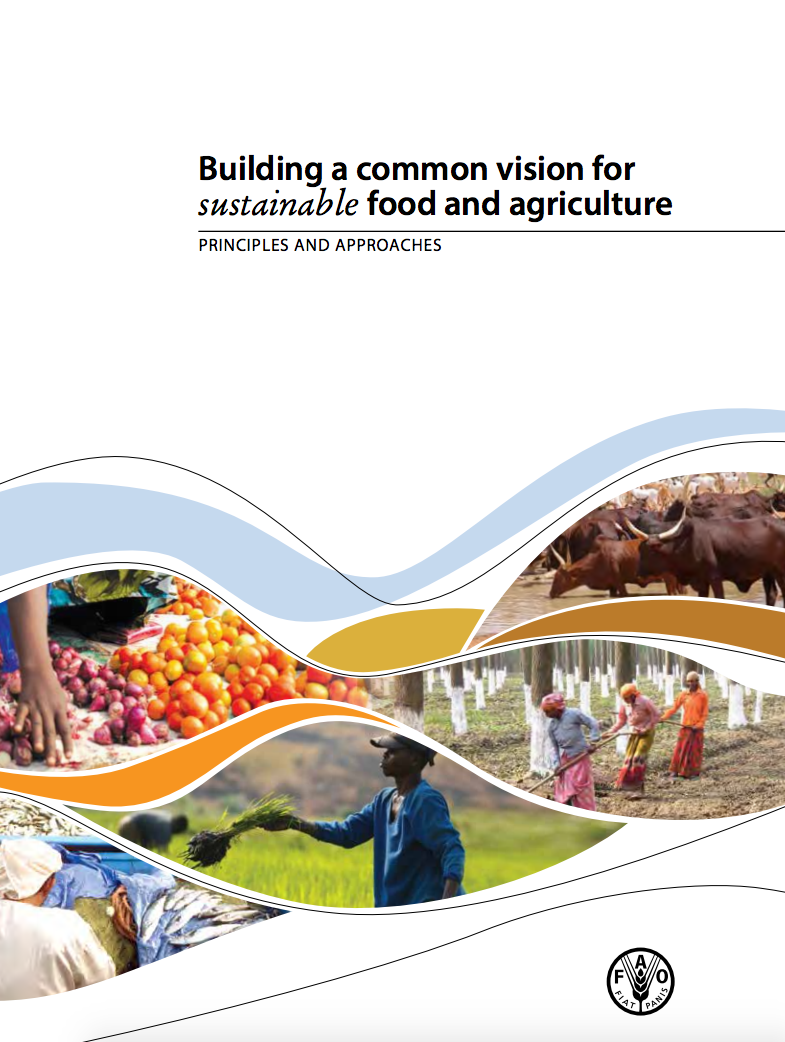Resource information
services is not implied in any way. All requests for translation and adaptation rights, and for resale and other commercial use rights should be made via www.fao.org/contact-us/licence-request or addressed to copyright@fao.org.
Over the coming 35 years, agriculture will face an unprecedented confluence of pressures, including a 30 percent increase in the global population, intensifying competition for increasingly scarce land, water and energy resources, and the existential threat of climate change. To provide for a population projected to reach 9.3 billion in 2050 and support changing dietary patterns, estimates are that food production will need to increase from the current 8.4 billion tonnes to almost 13.5 billion tonnes a year. Achieving that level of production from an already seriously depleted natural resource base will be impossible without profound changes in our food and agriculture systems. We need to expand and accelerate the transition to sustainable food and agriculture which ensures world food security, provides economic and social opportunities, and protects the ecosystem services on which agriculture depends.
This report is aimed primarily at policy makers and others who make or influence national and institutional decisions and actions. It is the outcome of intensive consultations and discussions aimed at developing a common approach to FAO’s work on sustainability. That process was conducted in a climate of cross-sectoral collaboration that drew on the contributions of leading specialists in crops, livestock, forestry, fisheries, aquaculture, and natural resources. It builds on the Organization’s long experience in developing sustainability concepts, approaches and tools, and offers a common vision of the agriculture sector and of the inter-sectoral synergies aiming at making agriculture more productive and sustainable.
The result is a common vision and coordinated approach towards sustainable food and agriculture that is comprehensive and knowledge-based, but – above all – responsive to the needs and expectations of Member Countries. The report sets out five key principles that balance the social, economic and environmental dimensions of sustainability: 1) improving efficiency in the use of resources; 2) conserving, protecting and enhancing natural ecosystems; 3) protecting and improving rural livelihoods and social well-being; 4) enhancing the resilience of people, communities and ecosystems; and 5) promoting good governance of both natural and human systems. These five principles provide a basis for developing national policies, strategies, programmes, regulations and incentives that will guide the transition to an agriculture that is highly productive, economically viable, environmentally sound, and which is based on the principles of equity and social justice.
This approach to sustainability is at the heart of FAO’s new Strategic Framework. It is embedded in all five strategic objectives and is the specific focus of Strategic Objective 2, which aims at sustainably increasing the provision of goods and services from agriculture, forestry and fisheries. While the implementation of more sustainable policies and practices is the decision and responsibility of each Member Country, partnerships, coalitions and creative modes of collaboration will be increasingly important. FAO can leverage its own expertise and resources, along with other partners, to complement those of the Member Countries in order to speed up the delivery and uptake of sustainable technologies and practices, and enhance impact.
This document represents the first step in accelerating the transition to sustainable food and agriculture, ending hunger and poverty, and realizing the future we all want.


